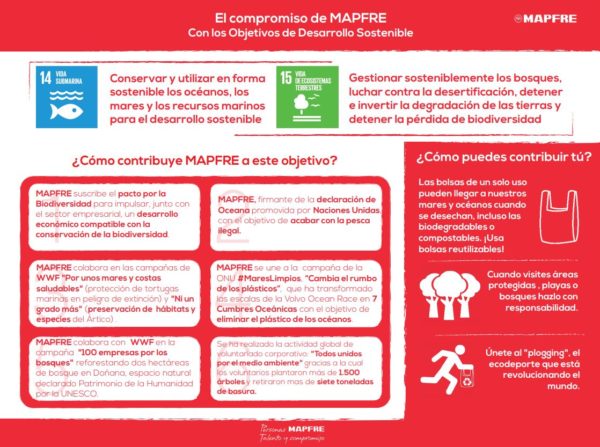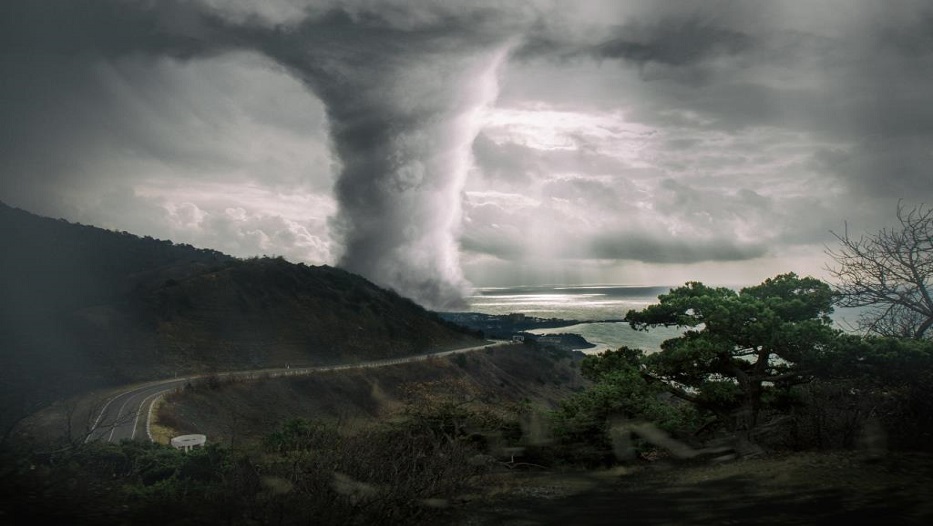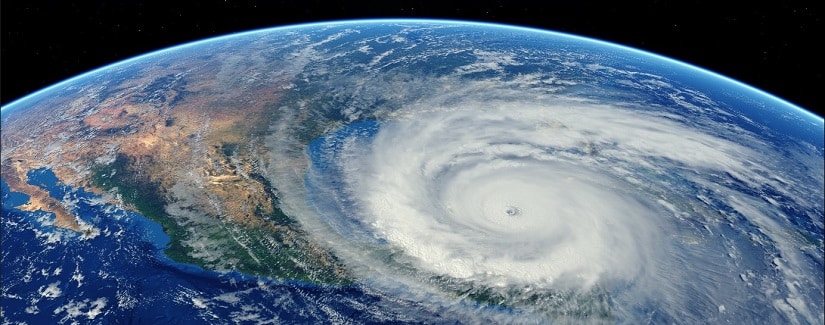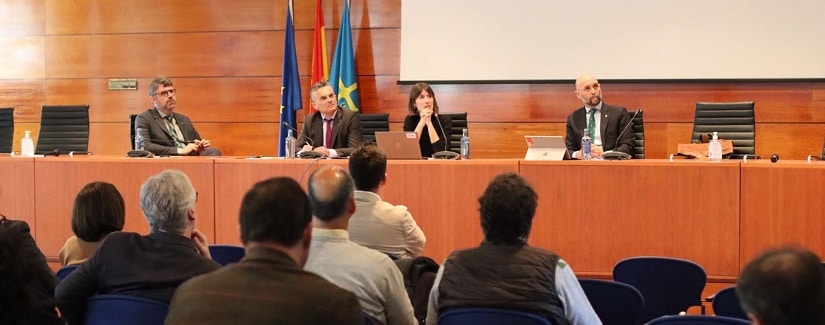Is there any link between climate change and the severe hurricane seasons?
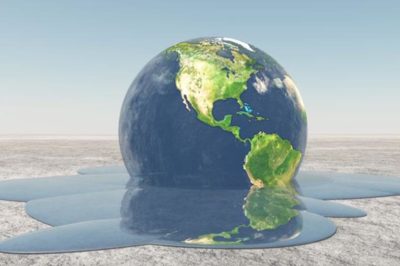
Experts on Climate Change at the World Meteorological Organization (WMO) reached the conclusion that although there is no clear proof that climate change influences the frequency of the hurricanes that move slowly and reach land, as was the case with Hurricane Harvey, it is possible that climate change brought on by man has made rainfall heavier and that current rising sea levels increase the affects of storm surges.
Sea temperature is crucial to the formation of cyclones, as the warmer the water, the more evaporation is produced in the form of moisture. Hurricanes form with a water surface temperature of 26.5 degrees and during Hurricane Irma, for example, the water was at 30 degrees. In 2017 the ocean heat content reached record highs, making this year one of the three hottest in history.
Rising global temperatures cause the surface evaporation of water and encourage the formation and intensity of hurricanes. It might be argued that the heat accumulated in the sea serves as a catalyst for hurricanes, and that for each extra degree Celsius of heat in the atmosphere, the sea can retain 7% more.
One such event whose effects were magnified by altered environmental factors due to global warming was Hurricane Harvey.
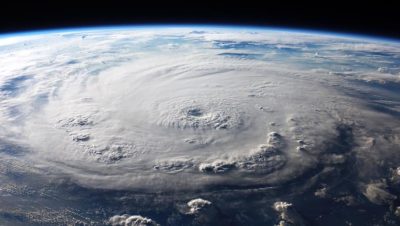
Rising global temperatures cause the surface evaporation of water and encourage the formation and intensity of hurricanes.
Harvey was one of the strongest in the Atlantic hurricane season in 2017. It went from being a tropical depression to a severe hurricane which reached land as a category 4 hurricane. For several days the hurricane stayed over Texas (USA), having lowered its intensity to category 1, causing heavy rainfall leading to significant flooding. One of the possible reasons for these events could be due to the high water surface temperature which boosted the intensity of the hurricane and extended its duration.
The insurance sector and catastrophic events
Catastrophic events have a serious impact on the insurance sector, both in terms of the loss of human lives and economic losses.
As outlined by the Department of Catastrophic Risks of MAPFRE Global Risks, it is crucial for insurers to have:
- A detailed knowledge of the insured risks (their geolocation and the characteristics of their assets), in order to select the right catastrophe protection.
- Good management and control of accumulation in order to optimize the use of capital.
- Maximum collaboration and transparency between the insured and the insurer, in order to provide the best assessment and pricing of the risk.
MAPFRE Global Risks manage over 800,000 situations of risk in more than 200 countries.
Insurance industry economic report
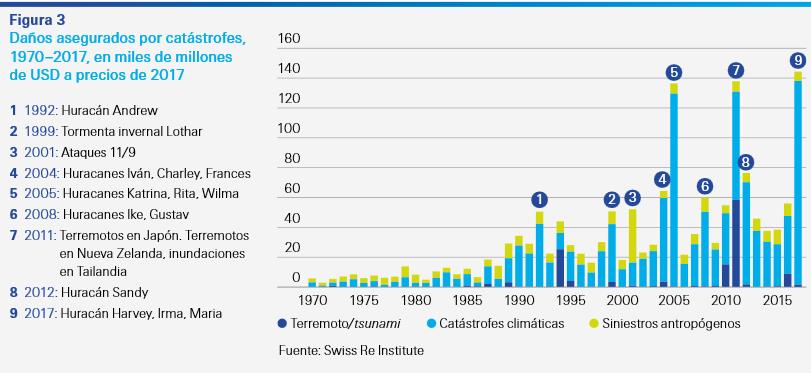
More frequent events and their impact
According to the latest studies, the most frequent events are tropical cyclones (hurricanes, storms, typhoons).
Furthermore, more than half of these events are recorded in North America. This region registers 60% of the damages caused by catastrophic events with a significant impact. The vast majority of losses are caused by hurricanes.
2017 was the fourth year in which ten tropical storms in a row turned into hurricanes. José was recorded as the seventh largest hurricane since 1966, lasting 16 days and 12 hours.
Historic distribution of the number of High Impact Events


Source: Swiss Re Economic Research &Consulting
Historic distribution of Insurance Industry DAMAGES


Source: Swiss Re Economic Research & Consulting
Territorial organization as a means of minimizing the impact of climate change
One of the tools for minimizing the impact of the risks of climate change is to reduce territorial exposure through proper organization.
We can take as an example the heavy flooding which took place in Europe in May 2016. A season of torrential rain hit the south of Germany and left rainfall of over 40 L/m2 in scarcely 12 hours. At the same time the center of France was flooded in scenes similar to those which caused the worst flooding of the Seine since 1982. Terrible damage was recorded for both events, much of which was down to inadequate territorial organization, since a large part of the infrastructures were built on the flood plains of former rivers. Basically, the water regained its terrain, which is currently made up of cities.
MAPFRE’s commitment to the environment
MAPFRE is strongly committed to taking care of the Environment and to Sustainability. We support the Sustainable Development Goals of the United Nations and have received important distinctions in this regard:
- MAPFRE has achieved the maximum rating under the United Nations Global Compact on issues of Corporate Social Responsibility (CSR) for six consecutive years.
- Recognized as one of the leading companies in the fight against climate change (CDP – Driving Sustainable Economies).
